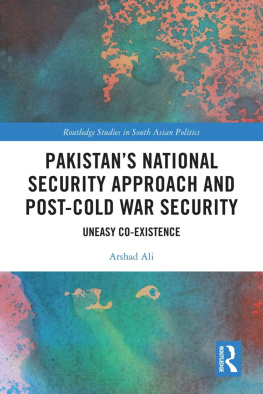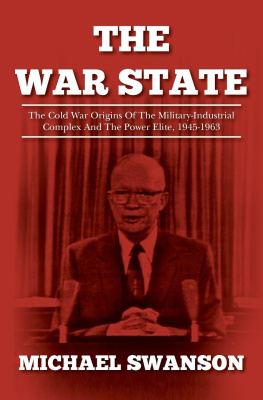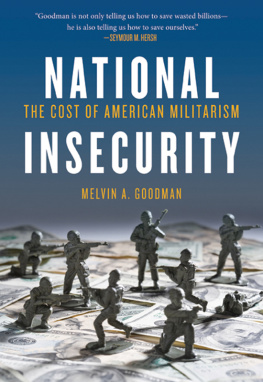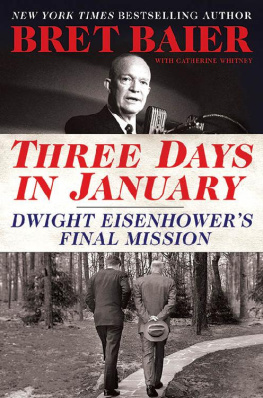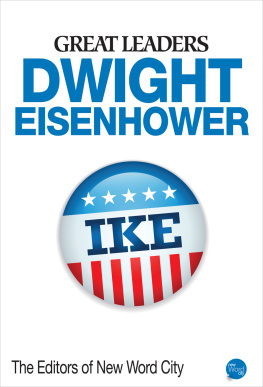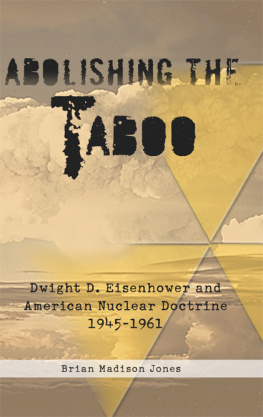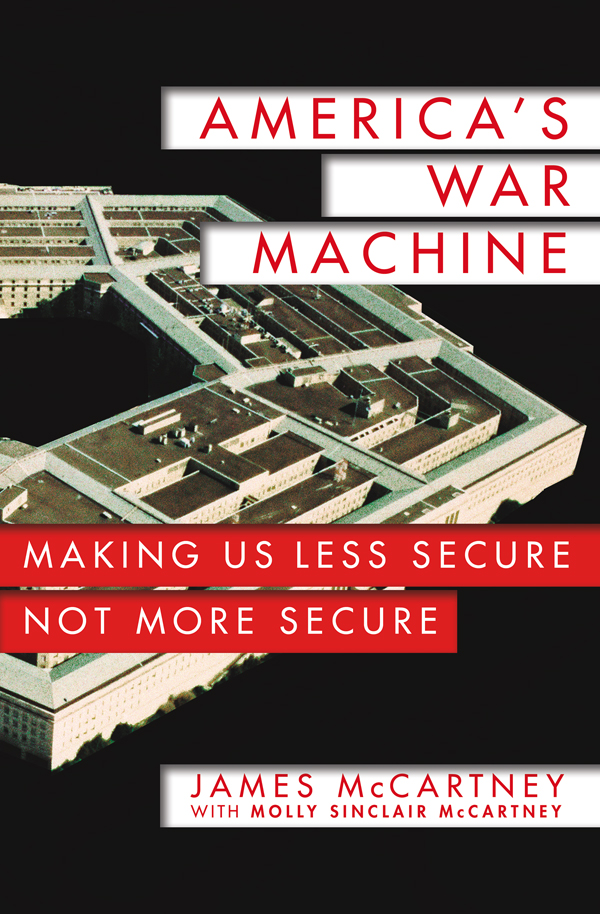Contents
Guide

The author and publisher have provided this e-book to you for your personal use only. You may not make this e-book publicly available in any way. Copyright infringement is against the law. If you believe the copy of this e-book you are reading infringes on the authors copyright, please notify the publisher at: us.macmillanusa.com/piracy.
Please note that some of the links referenced in this work are no longer active.
Love forever
to Becky, Dan, Maggie,
Jessica, Kristen, Liam,
and all those who will shape the future
James Harold McCartney met the military world as a teenage soldier from East Lansing, Michigan, living in foxholes on the front lines in France and Germany in World War II. In late March 1945, he was walking along a road in the suburbs of Worms, Germany, near the Rhine River when he and his group of GIs heard incoming artillery fire from the Germans deadly eighty-eight-millimeter guns. The GIs dived into a ditch. Jim landed facedown to protect himself. It didnt work. He was hit by shrapnel that sliced into the seat of his pants, tearing a gaping hole and leaving him a bloody mess. He passed out from the injury and was airlifted to a military hospital for treatment. He was recovering there on April 12, 1945, when a nurse came through his ward announcing that President Franklin Roosevelt had died.
Home from the war and finished with college, Jim went to work as a reporter for the Chicago Daily News . In 1961, as a new member of the newspapers Washington bureau, he was assigned to cover Dwight Eisenhowers final speech as president. Deep into the text, Ike said, We must guard against the acquisition of unwarranted influence, whether sought or unsought, by the military-industrial complex. The potential for the disastrous rise of misplaced power exists and will persist.
Newspaper stories about the speech were mixed, to say the least.
Editors at the Chicago Daily News, where Jim worked, saw the presidents warnings about the military-industrial complex as the vague musings of the old soldier and buried them inside a story on page 14. The part of Ikes speech that made the front page was Jims story on the economy; the headline was Economic Outlook Bright, Ike Insists. The Wall Street Journal published a brief front-page item that quoted the presidents forecast of a pickup in business shortly but did not mention the military-industrial complex. The Evening Star newspaper in Washington, D.C., had a similar spin with a headline that read: Eisenhower Predicts Early Economic Upturn.
The Chicago Tribune lead story headline was President Warns Red Struggle Will Go On. The Washington Post report began this way: In a farewell to the Nation, President Eisenhower said last night that the Communist danger promises to be of indefinite duration.
The Los Angeles Times published a banner headlineIke Warns of Danger in Massive Defensesand a story about the unwarranted influence of a military-industrial complex. The New York Times summed up the story with this headline: Eisenhowers Farewell Sees Threat to Liberties in Vast Defense Machine.
But, as Jim often said to me and to others, none of the stories published about Ikes speech at the time explained the military-industrial complex or the danger it represented in terms that would matter to the average reader. He said that he personally was baffled by the presidents language. I didnt know what Eisenhower was talking about. But he was curious and began researching the issue. Ten months later, in November 1961, his five-part series on the military-industrial complex was splashed across the front page of his newspaper. It was a focus that Jim would never relinquish.
As a Nieman Fellow at Harvard University in 196364, Jim studied national security issues. His classes included one taught by Henry Kissinger, a faculty member who became secretary of state under President Richard Nixon.
In 1968, Jim joined the Knight newspaper chain as its Washington-based national security correspondent. He reported from more than thirty countries, writing about the U.S. war in Vietnam, the Cold War with the Soviet Union, the confrontations in the Middle East over oil and arms, and American military interventions in Grenada, Panama, Haiti, and elsewhere.
From those experiences, Jim saw the growing military-industrial nexus as a war machine that imperils our country. It erodes our democracy, leads us into endless conflicts, and adds billions to our debt.
In his news stories and in columns, Jim sought to explain this complicated issue to readers by translating the jargon and double-talk of policymakers into stories that made sense. He saw his readers as people who work hard to support their families, who care what Washington does with their money, but who may not always have time to read and digest the decisions of Big Government.
But he also sought to reach policymakers and academics by asking tough questions and using their answersand nonanswersin the articles he wrote to reveal the truth.
In his retirement years, Jim taught at Georgetown University. One of his most popular courses was War and Peace and the Media, which focused in part on the war machine. Students gave him outstanding evaluations.
Jims passion on this issue flared anew on February 5, 2003, when Secretary of State Colin Powell addressed the United Nations Security Council in a speech intended to justify the U.S. invasion of Iraq over its alleged possession of or quest for nuclear, biological, or chemical weapons. After watching the speech on television, Jim declared that the allegations were bogus and that the United States had no evidence that Saddam Hussein had such weapons.
We have no business going into Iraq, he said. We dont know what we are getting into, except that it means a lot of people are going to be killed.
This became the theme of the classes Jim taught, the newspaper columns he wrote, and the speeches he gave to veterans, civic groups, and political clubs. He argued that the U.S. invasion of Iraq was the latest example of pro-war constituencies out of control. People would listen and then say that they had no idea that this was how our defense system works. They urged Jim to write a book explaining Americas war machine.
He had finished more than half of this manuscript and written an outline for the rest when he died May 6, 2011, after a brief battle with cancer. As his wife, I listened to his speeches, prepared the graphics for his talks, and read his newspaper reports about this during more than twenty-six years of marriage, and I am convinced he was right. He was an independent thinker who had the credentials and the intellect to prove his point of view. As a journalist myself with more than thirty years of reporting experience at five newspapers, including fourteen years at The Washington Post, I admired his ability to ferret out the truth in these life-and-death issues and explain it in understandable terms. I found his views consistent with those I developed in my studies at Georgetown University, where I earned my bachelors degree, and at Harvard University, where I was a Nieman Fellow in 197778. I have also had the benefit of travel to many countries in Asia, Europe, and the Middle East, including a trip to Syria in 2010, just months before its civil war broke out.
Most recently, I had the opportunity as a 2012 Public Policy Scholar at the Woodrow Wilson International Center for Scholars in Washington, D.C., to update, edit, and expand Jims manuscript. With Wilson Center resources, I have added information on defense spending and national security policy. The twelve chapters provide readers with a guide to what has become Americas war machine, how it works, and why it is everybodys business.


